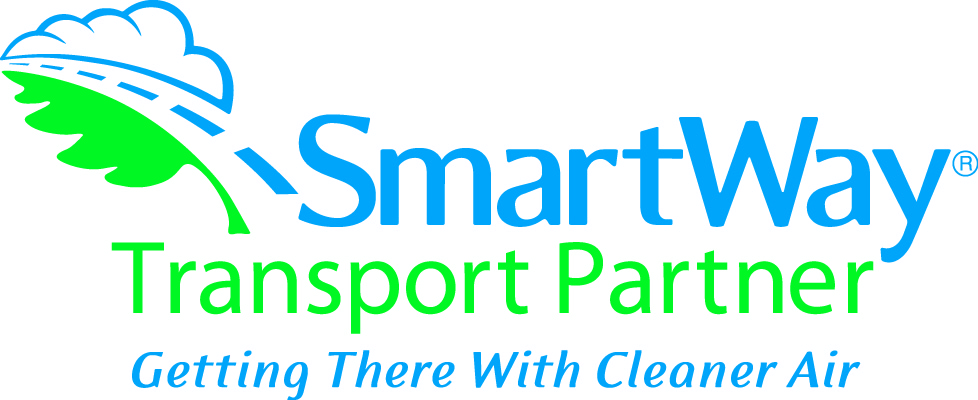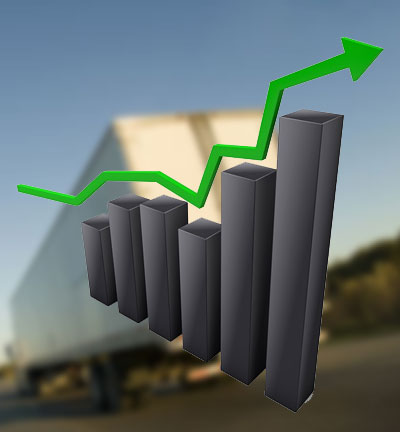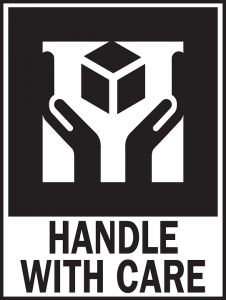
by logisticsplus | Sep 20, 2018 | News
FOR IMMEDIATE RELEASE
Logistics Plus Enters Eighth Year as a SmartWay Transport Partner
Logistics Plus successfully completes its 2017 emissions reporting with SmartWay Transport Partnership.
 ERIE, PA (September 20, 2018) – Logistics Plus Inc., a leading worldwide provider of transportation, logistics and supply chain solutions, continues its commitment to track and report its carbon accounting practices for an eighth consecutive year. Freight transportation is one of the fastest growing impacts on the environment as consumer demand increases. Logistic Plus is committed to respond with the most efficient and clean transportation practices.
ERIE, PA (September 20, 2018) – Logistics Plus Inc., a leading worldwide provider of transportation, logistics and supply chain solutions, continues its commitment to track and report its carbon accounting practices for an eighth consecutive year. Freight transportation is one of the fastest growing impacts on the environment as consumer demand increases. Logistic Plus is committed to respond with the most efficient and clean transportation practices.
Logistics Plus is a U.S. Environmental Protection Agency (EPA) SmartWay® Transport Partner. Each year, performance data is submitted and reviewed to qualify as a SmartWay partner. The EPA recently approved the Logistics Plus annual submission of Partnership reporting requirements for 2017.
“Logistics Plus knows that partnering with SmartWay is good for business, people and the environment,” says Cheryl Bynum, U.S. EPA’s SmartWay Director, “By partnering with us, Logistics Plus is demonstrating their commitment to sustainability through cleaner, lower carbon goods movement.”
“Logistics Plus first joined the SmartWay initiative in 2010 with the goal of improving its impact on the environment,” said Steve Srnka, compliance attorney for Logistics Plus. “Our continued SmartWay approval confirms to our customers and partners that Logistics Plus is committed to doing its part for environmental sustainability.”
About SmartWay
SmartWay is a voluntary and cost-free program that supports companies’ initiatives to reduce greenhouse gas emissions from freight supply chain transportation activities. Operational strategies, data management tools and verified technology supports are provided. The SmartWay Partnership is a domestic and international freight and supply chain program that manages data for over 3500 partners across all domestic shipping modes in the US and Canada. SmartWay implements its goals to lower freight carbon footprints by conducting analysis and research of freight impacts, engaging with freight experts, anticipating and responding to trends, developing strategic resources and communication strategies, and serving as an international model. International collaborations exist with Mexico, China and other Asian nations, Europe, and Latin America. Learn more about the EPA’s SmartWay program at: https://www.epa.gov/smartway/.
About Logistics Plus Inc.
Logistics Plus Inc. provides freight transportation, warehousing, fulfillment, global logistics, and supply chain management solutions through a worldwide network of talented and caring professionals. Founded in Erie, PA by local entrepreneur, Jim Berlin, 21 years ago, Logistics Plus is a fast-growing and award-winning transportation and logistics company. With a strong passion for excellence, its 400+ employees put the “plus” in logistics by doing the big things properly, and the countless little things, that together ensure complete customer satisfaction and success.
The Logistics Plus® network includes offices located in Erie, PA; Little Rock, AR; Los Angeles, CA; Riverside, CA; San Diego, CA; San Francisco, CA; Visalia, CA; Atlanta, GA; Chicago, IL; Detroit, MI; Lexington, NC; Buffalo, NY; New York, NY; Olean, NY; Akron, OH; Cleveland, OH; Charleston, SC; Nashville, TN; Dallas, TX; Fort Worth, TX; Houston, TX; Laredo, TX; Winchester, VA; Madison, WI; Australia; Bahrain; Belgium; Brazil; Canada; China; Colombia; Czech Republic; Egypt; France; Germany; Hong Kong; India; Indonesia; Kazakhstan; Kenya; Libya; Mexico; Netherlands; Poland; Saudi Arabia; Singapore; South Sudan; Taiwan; Turkey; UAE; Uganda; and United Kingdom; with additional agents around the world. For more information, visit www.logisticsplus.com or follow @LogisticsPlus on Twitter.
Media Contact:
Scott G. Frederick
Vice President, Marketing
Logistics Plus Inc.
(814) 240-6881
scott.frederick@logisticsplus.com
Click image below to download the Logistics Plus logo:


by logisticsplus | Jul 9, 2018 | News
 Less than truckload (LTL) shipping involves the transportation of relatively small freight shipments that can weigh anywhere between 150 to 10,000 pounds. LTL carriers collect freight from multiple shippers and consolidate that freight onto trailers before the delivery process begins. LTL shipments can be very confusing, because unlike Full Truck Load (FTL) shipments, LTL shipping rates are calculated from several varying factors. Knowing the factors that impact LTL shipping rates is helpful for creating more realistic rate expectations and increasing long-term savings. Here are the factors:
Less than truckload (LTL) shipping involves the transportation of relatively small freight shipments that can weigh anywhere between 150 to 10,000 pounds. LTL carriers collect freight from multiple shippers and consolidate that freight onto trailers before the delivery process begins. LTL shipments can be very confusing, because unlike Full Truck Load (FTL) shipments, LTL shipping rates are calculated from several varying factors. Knowing the factors that impact LTL shipping rates is helpful for creating more realistic rate expectations and increasing long-term savings. Here are the factors:
Weight & Density
Weight and density are the two most basic aspects of how LTL shipping rates are calculated. Typically, freight companies rate shipments at the lowest weight and category, meaning that the more a shipment weighs, the less it costs per hundred pounds. Furthermore, be sure to measure the longest sides of all packaging, including anything that overhangs. To determine the density of your shipment, the total weight of your shipment is divided by the total cubic feet. Logistics Plus offers a free, online freight density calculator to quickly determine the density of any shipment.
Freight Classification
Once density is calculated, you can now determine the proper freight classification. The National Motor Freight Traffic Association (NMFTA) established “freight classes” that are used to classify commodities for rating purposes. Classifications are based on a products density, stow-ability, value, handling and liability. Each commodity is categorized into one of 18 different freight classifications that range from 50 to 500. Generally, the lower the freight class, the more dense the commodity. Conversely, a higher freight classification represents a less dense product that typically takes up more space. As a general rule of thumb, the higher the freight class, the higher the rate will be. You can read more about freight classification on the Logistics Plus website.
Base Rates & Discounts
Every LTL carrier establishes their own base rates upon which they normally offer discounts. Base rates are typically quoted per 100 pounds, but can vary by company or by lane. One thing to make note of is that carriers will change their base rate depending on their need for additional volume and increased costs for lanes where they have a good balance between trucks and freight. It’s difficult to create an accurate comparison of LTL shipping rates just by looking at base prices or discounts because they’re almost always different. A lower discount off a lower base rate can actually be a better deal than a higher discount off a higher base rate. Logistics Plus can offer you a free freight analysis if you want to compare rates.
Minimum Charges
The absolute minimum charges refers to the minimum price a carrier will offer, and they will not go lower no matter the circumstances. In this case, even when discounts are negotiated, the absolute minimum charge still holds true. This minimum charge helps ensure that carriers cover all of their fixed costs for a specific shipment or lane. Understanding your carriers absolute minimum charge is an important factor to research, especially if you’re shipments are small and moving across short distances.
Origin & Destination
A shipment that needs to travel a further distance will tend to have higher rates than a short distance shipment. Shippers should be aware of which carriers serve their intended destination so that they can avoid additional charges or fees. It’s important to choose the correct carrier because if your shipment needs to be transferred to another LTL carrier, costs will rise and the goods will be more susceptible to damages.
Surcharges & Accessorial Fees
Accessorial fees apply when additional services are required to handle your shipment. These fees apply when the typical dock-to-dock pickup and delivery service most LTL carriers provide isn’t enough. Common examples of accessorial services include lift-gates, weekend deliveries, and pickup or delivery at special origins or destinations. Fuel surcharges are also a common accessorial fee that LTL carriers charge. Knowing how these additional fees impact your overall expenses is important when determining who you want to work with as your LTL carrier.
If you feel like you’re over-spending on LTL freight, or if you lack the expertise to negotiate your own rates, please consider working with Logistics Plus. As a top freight brokerage firm, our LTL experts help hundreds of companies save on their LTL shipping every day. Logistics Plus will ensure you get a quick and accurate LTL freight quote for any shipment.



by logisticsplus | Jun 11, 2018 | News
 Learning how to correctly file a freight claim is important because it can save time and money for your company. A freight claim is a legal demand for the payment of money, stemming from the breach of a contract of carriage. Following strict guidelines and processes is the only way to correctly deal with these claims. Most importantly, there are four crucial elements to filing a freight claim:
Learning how to correctly file a freight claim is important because it can save time and money for your company. A freight claim is a legal demand for the payment of money, stemming from the breach of a contract of carriage. Following strict guidelines and processes is the only way to correctly deal with these claims. Most importantly, there are four crucial elements to filing a freight claim:
- The shipment needs to be identified so the carrier can complete an investigation.
- The type of loss or damage must be stated.
- The amount for the claim must be estimated.
- A demand for payment by the carrier must be included.
After making sure all four elements are clearly indicated, follow these tips and suggestions to ensure you correctly file your next freight claim:
- Take immediate action
- Taking immediate action is a crucial step of effectively filing a freight claim. Freight claims for loss or damage are generally governed by Title 49, CFR. Claimants must file the claim within the time limits specified in the bill of lading or contract of carriage. The time period cannot be more than 9 months from date of delivery or, if never delivered, the expected delivery date. Unless it’s otherwise agreed upon in a contract, a carrier must acknowledge receiving the claim within 30 days. The carrier must then pay, offer to compromise, or disallow the claim within 120 days or provide status reports every 60 days after. If the carrier fails to abide by these rules, it should be notified that it is violating the FMCSA claim regulations. Furthermore, if the damages are not noted on the delivery receipt at the time of delivery, you have only 5 days to alert the carrier of concealed damage. After these 5 days, the carrier can deny the claim due to the shipment being signed as clear.
- Attempt to mitigate the damages
- A responsibility that all parties of the shipping process share is attempting to mitigate damages. It is your responsibility to give a good faith effort to salvage damaged products unless you consider them to be totally or substantially useless and of no good.
- Have additional documentation available
- In order to make sure your freight claim is successful, always include supporting documentation. If it’s available, you should include the original bill of lading (BOL), the paid freight bill, inspection reports, notification of loss, copies of request for inspection, invoices, waivers, and other appropriate documents. Recently, some carriers have adopted picture policies, which require photographic documentation of all damages or else they will not process that claim. The more information you have regarding the freight, the more effective your claim will be.
- Create a detailed description of the losses or damages
- A detailed description of the loss or damage should be properly documented. The claimant should include the number of items damaged, the type of damage, the value of each unit, and the total claim amount. For example:
- 15 boxes of cell phones – (water damaged) @ $500 each: $7,500
- 5 boxes of cell phone cases – (crushed) @ $100 each: $500
- Total Damages: $8,000
- Amount Salvaged: $250
- Total Claim Amount: $7,750
If you frequently ship LTL freight or truckload shipments, freight losses and damages are almost inevitable, as is dealing with freight claims. That’s why it’s important to have an experienced and caring freight management partner working with you every step of the way. When you work with Logistics Plus, we’ll gladly assist you with the filing or processing of your freight claims, and we’ll assist you to find the carriers that best represent your interests. Contact us today to learn more.


by logisticsplus | Apr 25, 2018 | News
 As a reminder, new National Motor Freight Classification (NMFC) freight classification changes will be going into effect this weekend on April 28, 2018. According to 2018-1 Public Docket files and a February 16, 2018 Notice of Disposition document the commodities affected include …
As a reminder, new National Motor Freight Classification (NMFC) freight classification changes will be going into effect this weekend on April 28, 2018. According to 2018-1 Public Docket files and a February 16, 2018 Notice of Disposition document the commodities affected include …
- Ink, Dry Ink or Toner
- Privacy Stalls or Partitions
- Compressors, refrigeration or air conditioning
- Coffee Makers or Coffee or Hot Water Urns
- Shower or Bathtub Doors, Enclosures or Enclosure Sections
- Cookware or Bakeware
- Computer Component Security
- Cars, Lift Trucks or Vehicles
- Borax (Sodium Borate)
- Body Parts, NOI, Pickup Truck Bed Storage Boxes or Organizers
- Tools, power, other than power hand tools
- Capsules, dosage, empty
- Air Cleaners or Air Filtering Machines
- Insoles
- Sweeteners, NOI, including Sugar Alcohols
- Birdseed or Bird Food,
- Games or Toys, NOI
- Ice Crushing or Ice Shaving Machines
- Fireplaces or Imitation Fireplaces, NOI, or Fireplace Inserts
- Chairs or Stools, NOI, including Theater Chairs or Seating
Please contact your Logistics Plus freight representative if you have any questions regarding the new rules.

by logisticsplus | Mar 22, 2018 | News
 Logistics Plus recently recorded a new webinar as part of its ongoing series of complimentary logistics-related presentations for the Manufacturer & Business Association (MBA) and its members. The new webinar is focused on Freight Classifications and Density and was delivered by Kathy Fiedler, operations administrator for the Logistics Plus North American Division (NAD) and author of the Logistics Plus ebook Freight Density for Dummies.
Logistics Plus recently recorded a new webinar as part of its ongoing series of complimentary logistics-related presentations for the Manufacturer & Business Association (MBA) and its members. The new webinar is focused on Freight Classifications and Density and was delivered by Kathy Fiedler, operations administrator for the Logistics Plus North American Division (NAD) and author of the Logistics Plus ebook Freight Density for Dummies.
Although this webinar was prepared for the benefit of MBA members, the informational content is appropriate for any business that engages in freight shipping. Past webinars cover additional transportation and logistics topics. Logistics Plus is the company that manages the MBA Logistics Program. You can learn more about the program at www.mbausa.org/logistics.
Learn more about Freight Classification or check out our Freight Density Calculator.

 ERIE, PA (September 20, 2018) – Logistics Plus Inc., a leading worldwide provider of transportation, logistics and supply chain solutions, continues its commitment to track and report its carbon accounting practices for an eighth consecutive year. Freight transportation is one of the fastest growing impacts on the environment as consumer demand increases. Logistic Plus is committed to respond with the most efficient and clean transportation practices.
ERIE, PA (September 20, 2018) – Logistics Plus Inc., a leading worldwide provider of transportation, logistics and supply chain solutions, continues its commitment to track and report its carbon accounting practices for an eighth consecutive year. Freight transportation is one of the fastest growing impacts on the environment as consumer demand increases. Logistic Plus is committed to respond with the most efficient and clean transportation practices.


 Less than truckload (LTL) shipping involves the transportation of relatively small freight shipments that can weigh anywhere between 150 to 10,000 pounds. LTL carriers collect freight from multiple shippers and consolidate that freight onto trailers before the delivery process begins.
Less than truckload (LTL) shipping involves the transportation of relatively small freight shipments that can weigh anywhere between 150 to 10,000 pounds. LTL carriers collect freight from multiple shippers and consolidate that freight onto trailers before the delivery process begins. 


 Learning how to correctly file a freight claim is important because it can save time and money for your company. A freight claim is a legal demand for the payment of money, stemming from the breach of a contract of carriage. Following strict guidelines and processes is the only way to correctly deal with these claims. Most importantly, there are four crucial elements to filing a
Learning how to correctly file a freight claim is important because it can save time and money for your company. A freight claim is a legal demand for the payment of money, stemming from the breach of a contract of carriage. Following strict guidelines and processes is the only way to correctly deal with these claims. Most importantly, there are four crucial elements to filing a 


